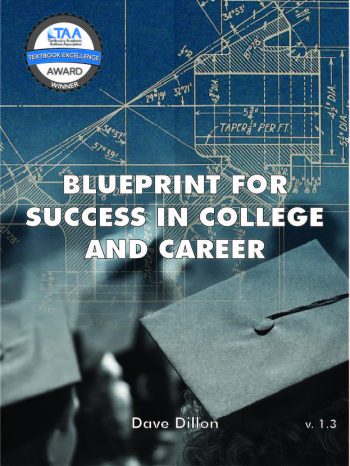No one could have imagined the phenomenal impact Blueprint for Success has had on the Open Education community. It has grown from an idea in Dave’s mind that took root in 2007 to a widely adopted, adapted, award-winning resource. The book was yet to be peer-reviewed when I had joined the team as one of the project managers. It was the first open textbook project that I was introduced to at Rebus, and couldn’t have been more excited to oversee its release. Now, after the book’s 2018 release, my role has shifted from coordinating the different phases of the publishing process to watching and providing advice as Dave and his team lead the charge. Despite the change in roles, I’ve still managed to learn a lot from participating in Dave’s team following the book’s release!
Publication is the start of a lot more to come
The biggest lesson has been that the life of an open textbook doesn’t end at publication. Rather, publication is the start of a lot more to come. Over the course of a year and a half since the book’s release, I’ve watched the community around the book put together an adaptation, create a set of ancillaries ranging from slide decks to test banks, add a chapter on cultural competency, and create an audiobook format of the text. Most recently, Dave and other team members have been toying with the idea of translating the book into Spanish so it can have an even broader impact.

Given that Dave had gone through the work of creating the original textbook collaboratively, he was well-equipped with the skills to form teams around each of these different branches and ensure their continued progress. By now, the public, open, community-focused approach has become second nature. Each of these projects have successfully gathered their own mini-teams, small or large, that are giving back and helping sustain the life of the original Blueprint book (which is itself a remix of four other OER!).
The new communities and projects have proven to me that OER like Blueprint can be high quality resources that are lauded by students and instructors alike. What makes the book appealing is not just the cost savings it provides or its multi-format availability, but also the thoroughness and standard of the content itself. The book has also been referred to by librarians, instructors, faculty, and has been held as an exemplar for doing open publishing the right way by many others.
But possibly the biggest seal of approval on the resource, and one that encourages me to keep doing what I do, is the report of how this book helped improve student retention rates and helped them stay enrolled. The book has brought people together, and has helped change students’ perceptions of how to make the best of their time in college. It has demonstrated to me how small contributions to a single OER project can have the potential to shape the world.
A protean collaborator
As I trace the impact of the book, I can’t help but marvel at how Dave has nurtured the various offshoots of his project. He’s grown into protean collaborator—able to manage a group of adopters, share public updates, mentor interns, all while teaching with the book in his own classrooms. The knowledge and experience he has accumulated has helped make each new task easier. This trajectory emphasizes how taking the time to guide one person through the open publishing process can help them develop the skills to contribute even more to the rest of the community. In Dave’s case, he is now in a position to pass along his knowledge to others, and allow them to join a branch of the Blueprint project so they can experience a similar journey. The small steps we take on open publishing and with our open textbooks now can help us grow in leaps and bounds in the years to come. Imagine what more we can do!
